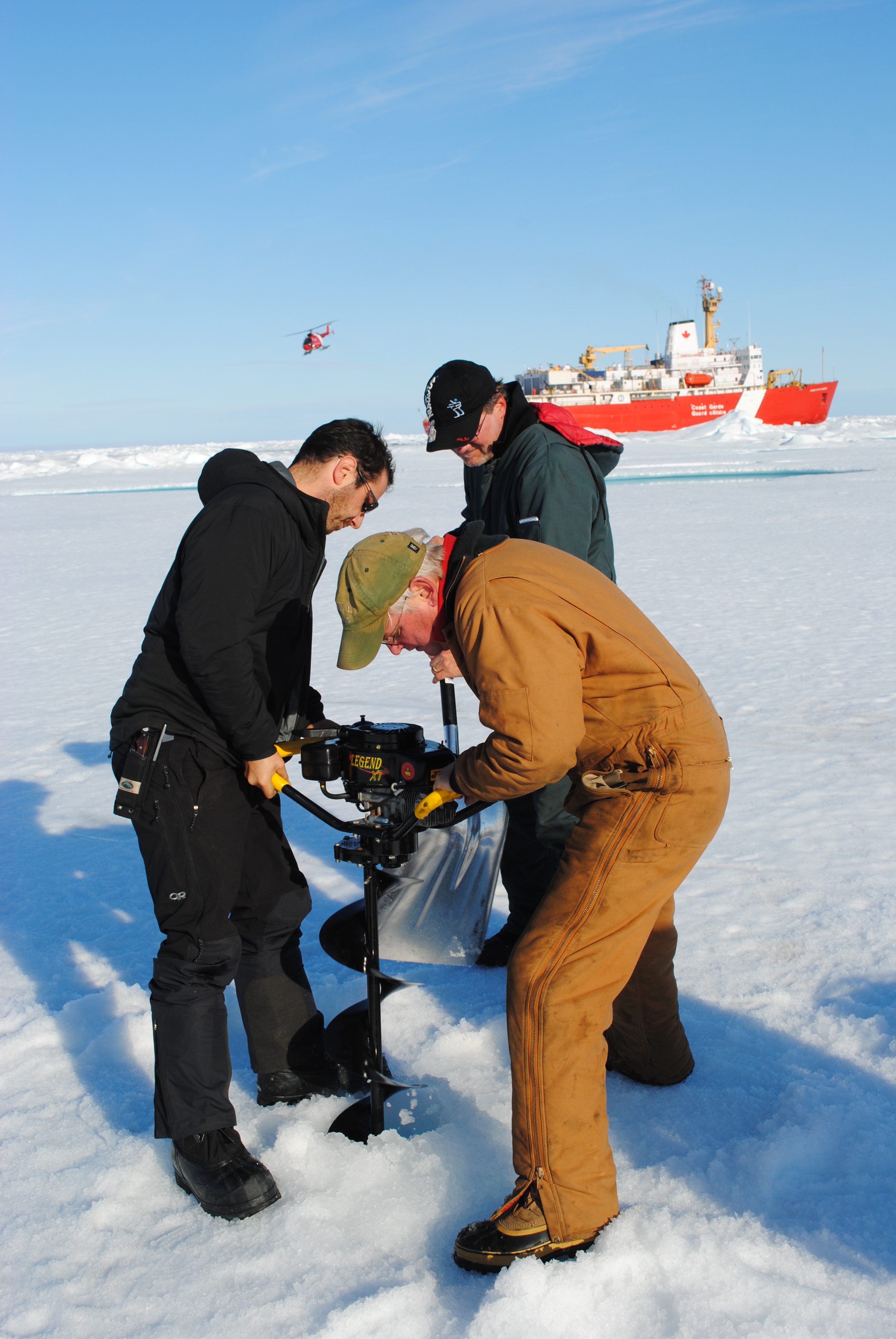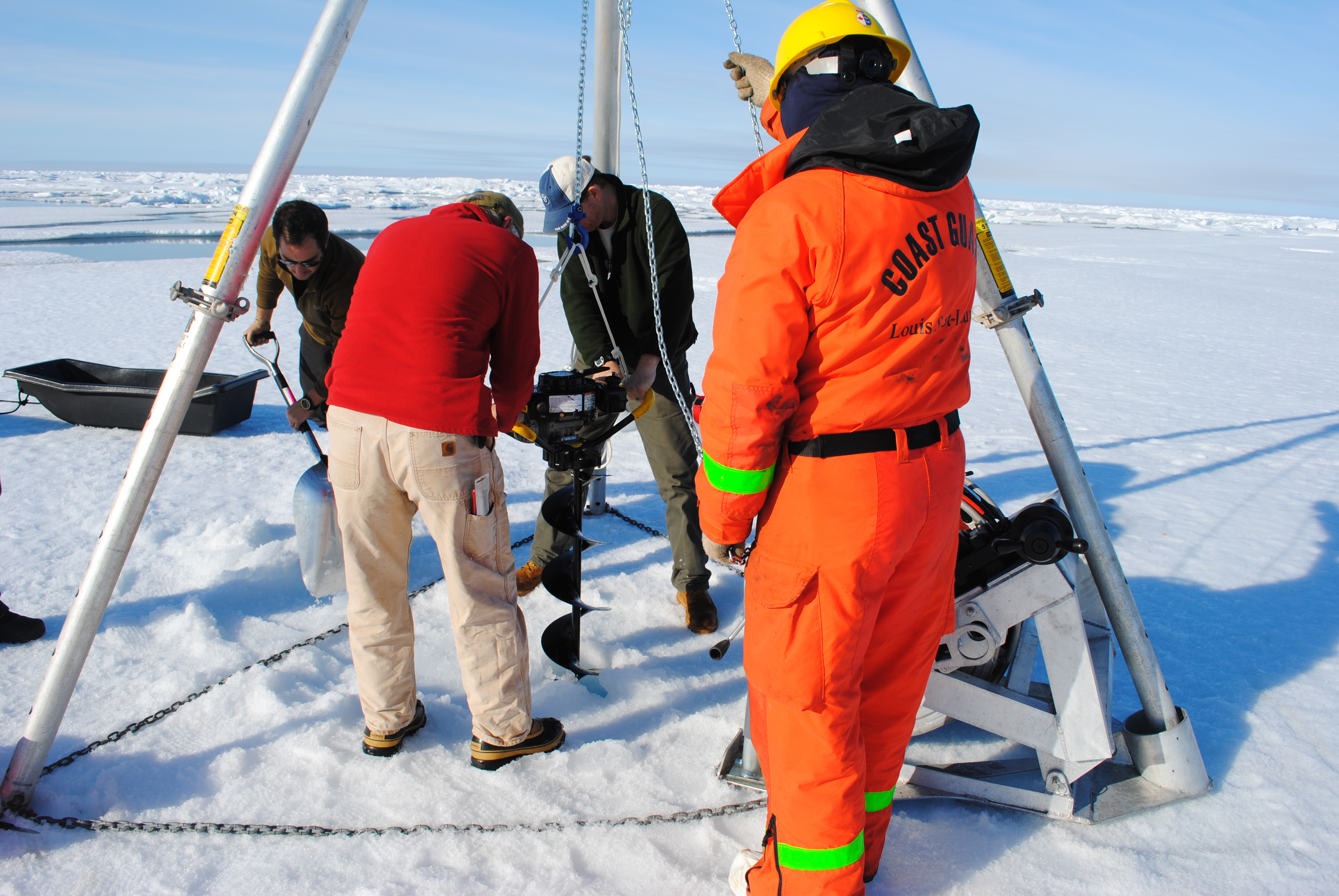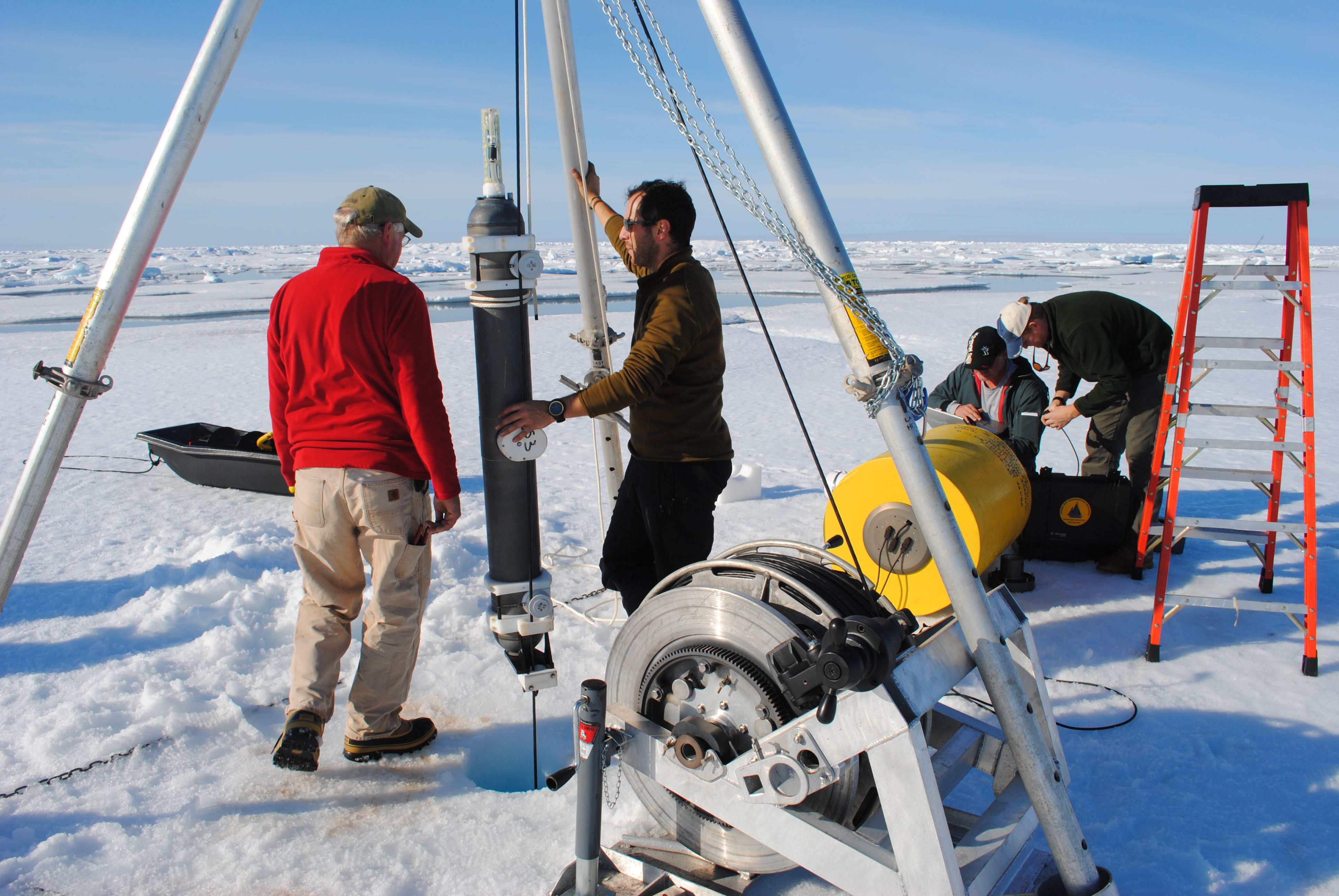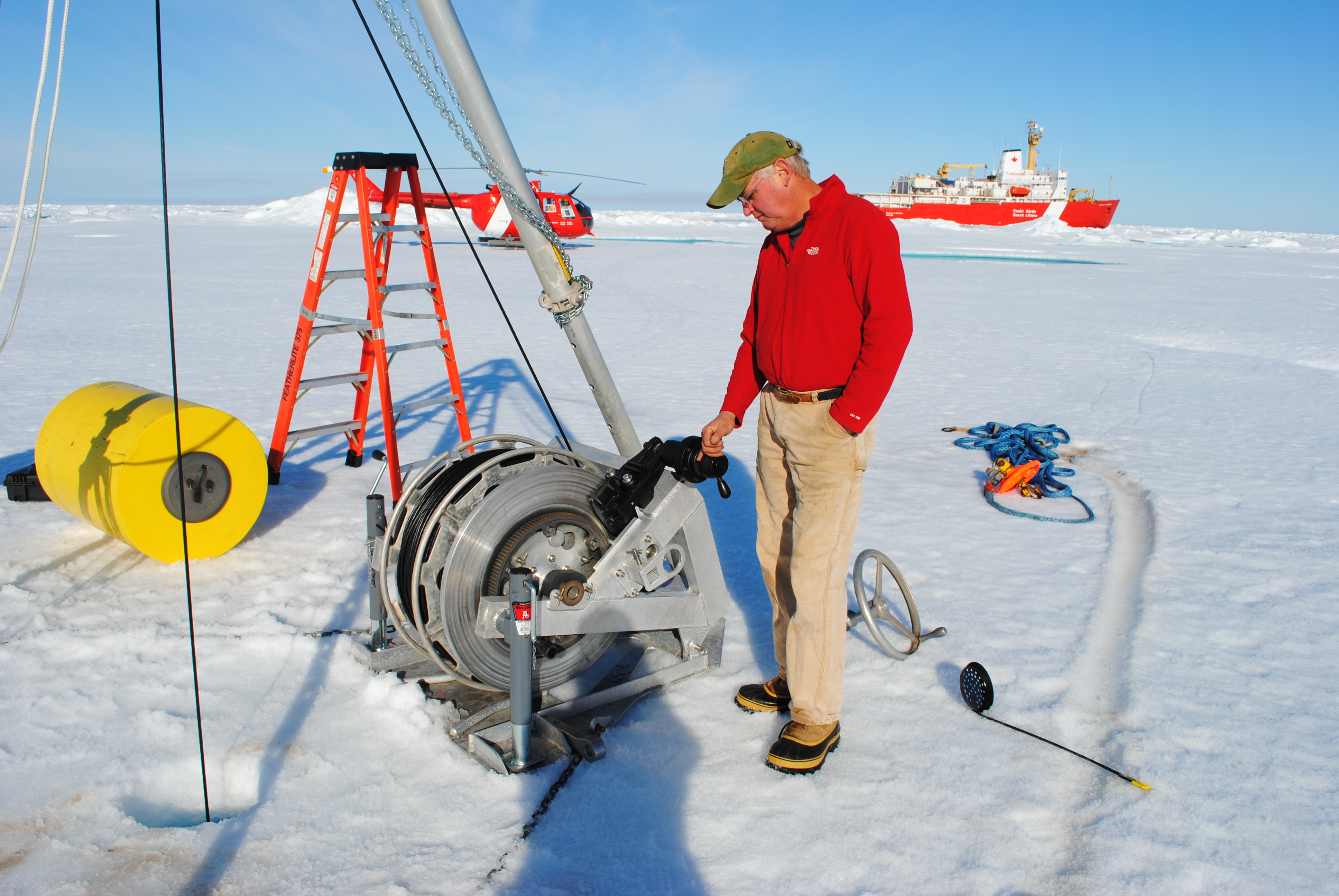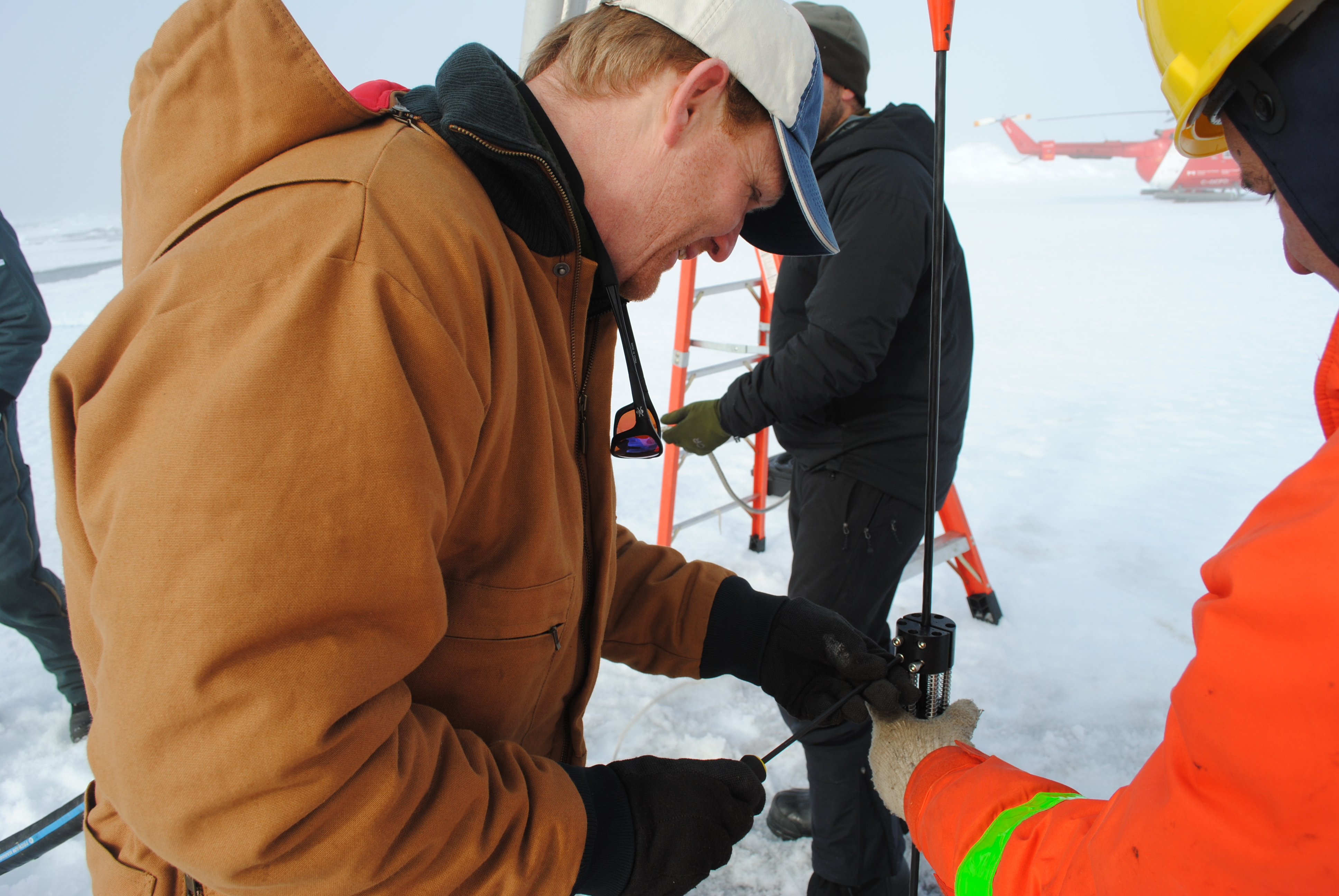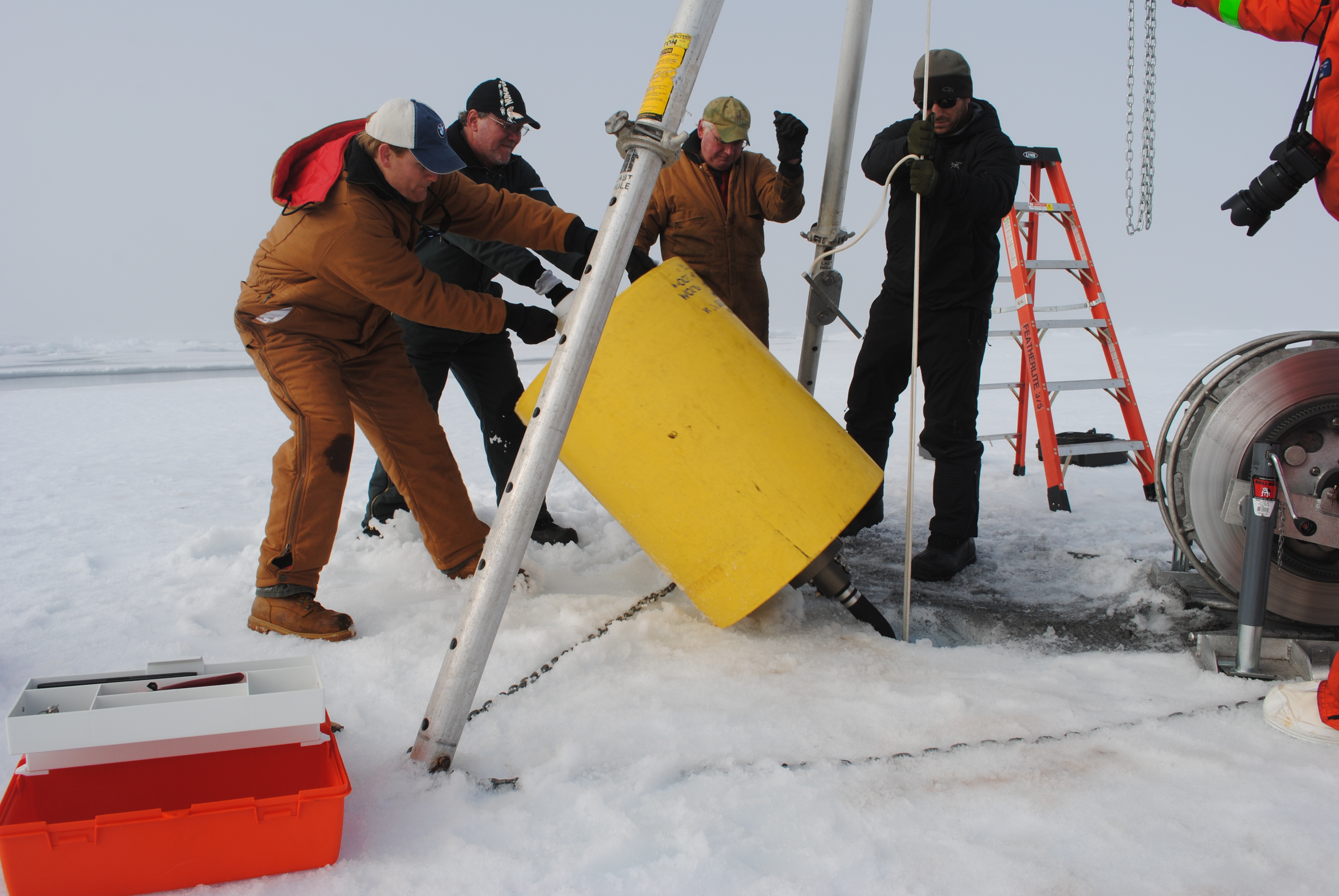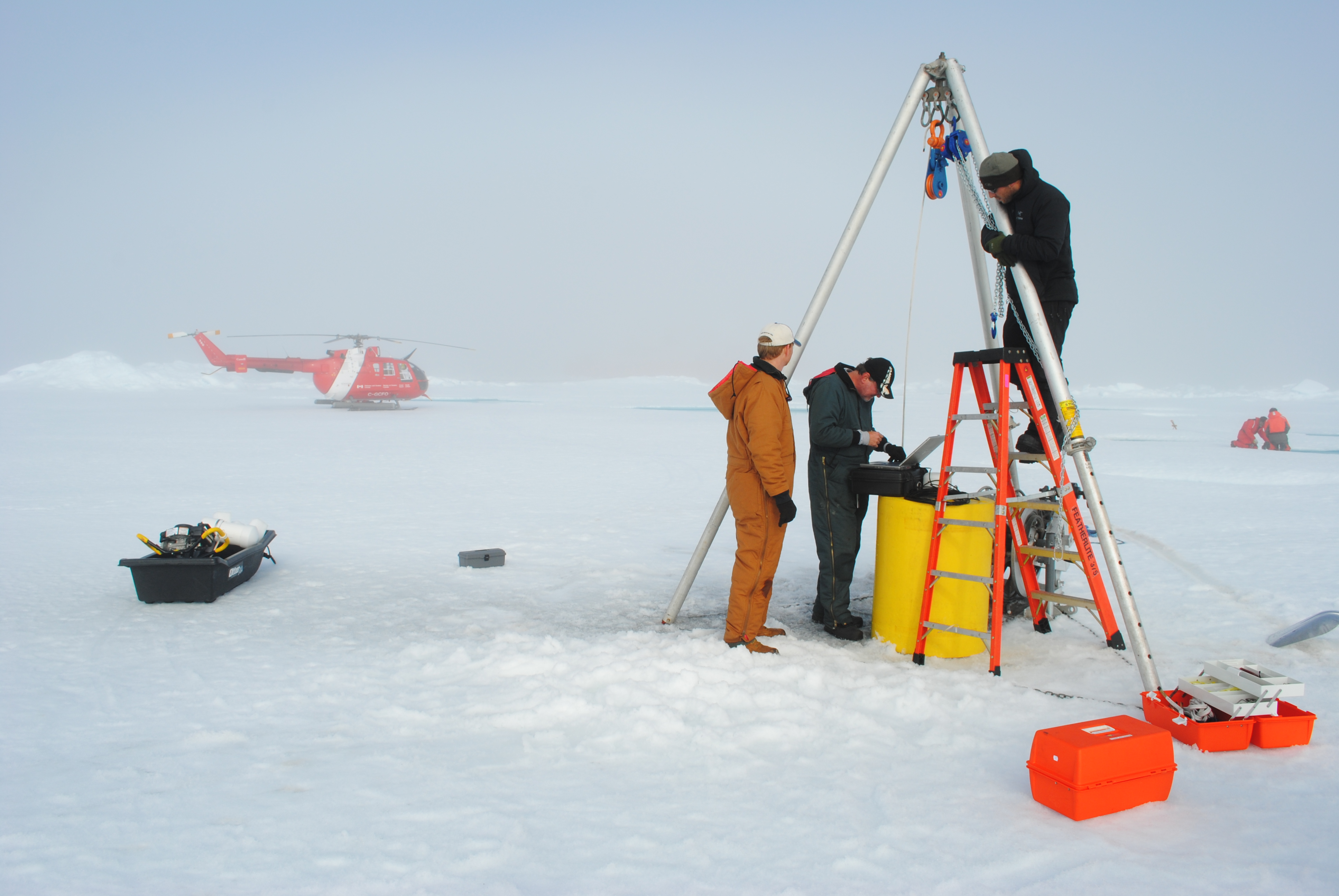ITP53 Deployment Operations
ITP 53 was the first of four ITPs installed in the Beaufort Sea during the 2012 JOIS expedition aboard the CCGS Louis St. Laurent and consisted of hardware recovered and refurbished from previous deployments. The surface unit was originally ITP 27, which was originally deployed in the Transpolar Drift in 2008, and the buoy was found washed ashore in Iceland in April 2010, returned to WHOI, refurbished, provide with new batteries, and retested with the refurbished profiler from ITP 8 that had been recovered in October, 2009. The system with new tether was dock tested in the spring of 2011 before shipment to the JOIS expedition.
The day of this deployment started off as a beautiful, sunny, and warm day with some fog arriving late. Helicopter reconnaissance in the clear morning quickly located a small but suitable floe which stood out amongst the neighboring floes, and was found to be over 3 m thick when landed on and surveyed. An hour later the entire deployment team, supporting crewmembers, other scientists to perform ice measurements, and all equipment had been transferred to the floe and the work began. In the warm conditions, many removed their outer cold weather layer and performed their tasks in jeans and lighter wear for much of the day -- atypical for the Arctic.
While the 3.8 m thick ice at the ITP deployment site was ideal for ensuring a robust platform for the buoy, drilling the 10.5” diameter hole through the thick ice becomes difficult as the auger goes deeper the ice shavings load the small auger engine. To assist, the tripod was assembled and the chainfall used to take some of the load of the auger head to facilitate the hole drilling which took about 45 minutes to complete. Twenty minutes later the inductive modem test completed, and the profiler lowered through the ice hole. The ITP system was completely installed and tested only 60 minutes after the hole was drilled, when the fog bank arrived. Half an hour later all were back onboard the ship.
More information and photos on the deployment operations conducted during the IBO deployment are also available at: https://www.whoi.edu/page.do?pid=74256.

